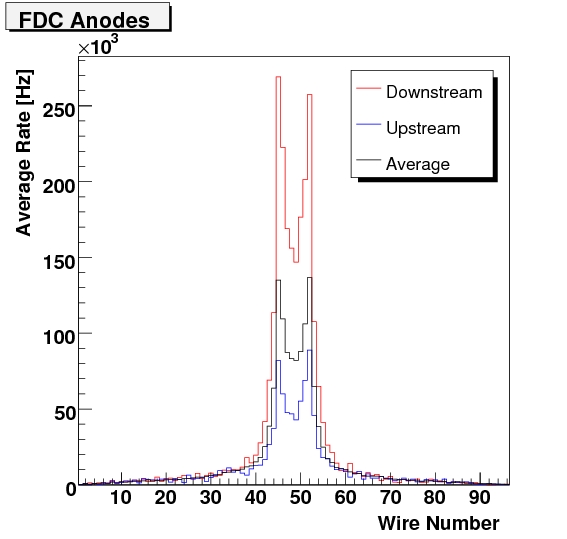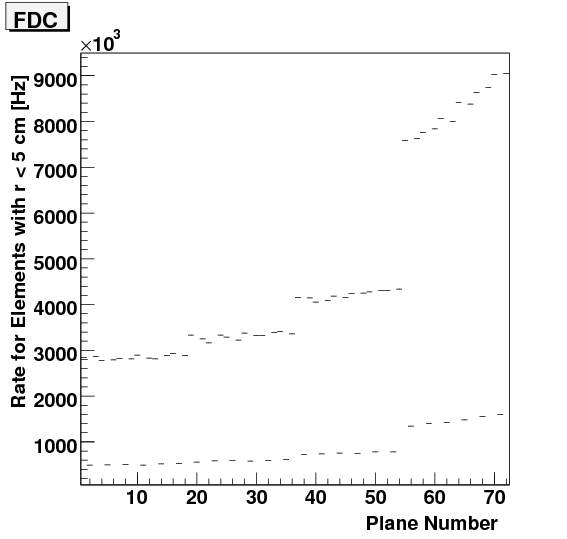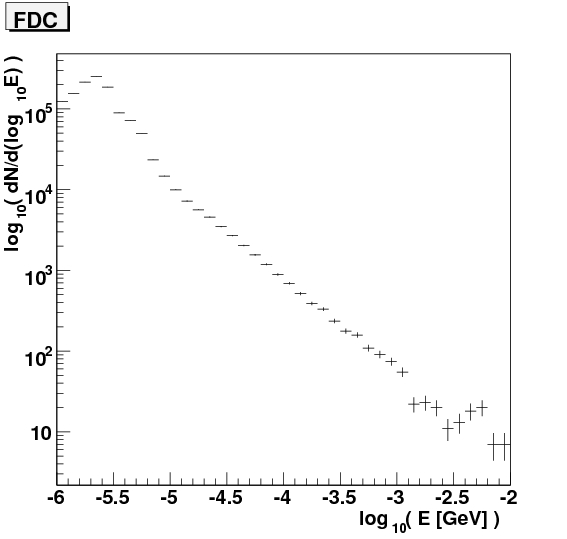Difference between revisions of "FDC Backgrounds"
From GlueXWiki
(→Items for Discussion) |
|||
| Line 12: | Line 12: | ||
== Items for Discussion == | == Items for Discussion == | ||
| + | * ''These rates seem '''incredibly''' high''. | ||
* Is the maximum number of hits coded into the simulation sufficient for the FDC? If it is applied at the event level, 100 hits is probably not enough. | * Is the maximum number of hits coded into the simulation sufficient for the FDC? If it is applied at the event level, 100 hits is probably not enough. | ||
| − | |||
| − | |||
== Plots == | == Plots == | ||
Revision as of 16:33, 15 January 2007
Back to Background Rate Studies
Detector Configuration
- Double-Hit Resolution: 250 ns
- Threshold: 1 keV
- Strip Threshold: 5 mV
- Maximum Number of Hits: 100
Items for Discussion
- These rates seem incredibly high.
- Is the maximum number of hits coded into the simulation sufficient for the FDC? If it is applied at the event level, 100 hits is probably not enough.



